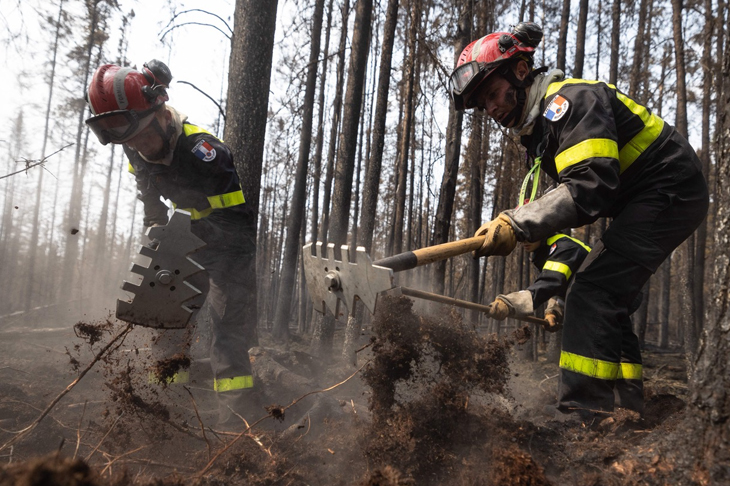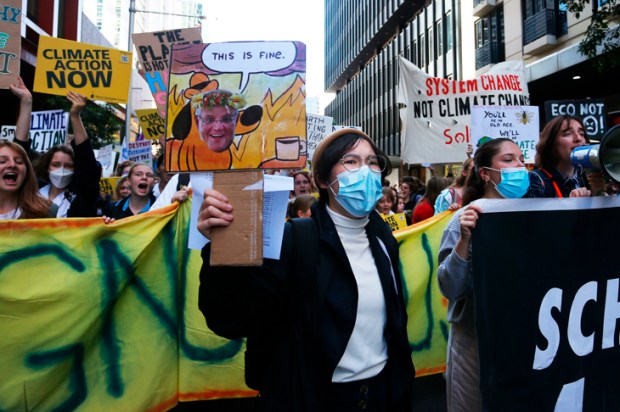The Canadian wildfires, with heavy smoke blanketing huge areas of the US as well, generated more catastrophising hysteria than light, just like the bushfires in Australia in the summer of 2019 to 2020. The debate over how much this is evidence of a climate emergency owing to global warming, or needlessly destructive fires resulting from neglect of prudent forest management, is also reminiscent of Australian debates. The instant blame game points the finger at climate inaction. Amidst the blackened skies and burning landscapes of Australia’s many fires that southern summer, the lazy response from some, for example the editorial board of the Financial Times (23 December 2019), was to blame climate denialism for the natural disaster. Yet much of the broader critique was misplaced. It showed wilful ignorance of Australia’s bushfire-prone history, downplayed the responsibility of state governments for prudent forest management practices, overlooked the long lead times between emissions and climate change, sidestepped the weak links between global warming and specific weather events, and exaggerated Australia’s impact on global temperatures. Which one of these doesn’t find an echo in North America at the moment?
As we saw with Covid, the data and timeframes for comparison are often cherry-picked around the preferred narrative. A paper from the Clintel Foundation on 9 May found that disaster losses have decreased since 1990 and the death toll from extreme weather has fallen by 95 per cent since 1920. Some of the deadliest disasters have resulted from human decisions. The primary blame for the Ukrainian famine of 1932 to 1933 that killed 13 per cent of the population lay with Stalin’s policies. Similarly, Mao Zedong’s ideologically driven farming policies contributed to the great China famine in 1959 to 1961 that killed tens of millions. In recent decades the natural disasters with the worst mortality impacts have been earthquakes and tsunamis (as on Boxing Day 2004 in the Indian Ocean that killed quarter of a million people) and volcanic eruptions unrelated to climate change.
The total number of wildfires has been falling in recent years, not rising. If we look at the acreage burned in the US, there is an increase from just three to around ten million acres per year since 1990. However, it has fallen steeply from a high of over 50 million acres per year since the 1920s. The situation in Canada is similar. According to a study by the Fraser Institute, between 1959 and 2019, ‘there was a sharp increase in destruction caused by forest fires in the first half of this period, and a general decline in the second half’. Around 7.6 million hectares were burned at peak in 1989, falling to 1.8 million hectares in 2019.
Also like Covid, climate alarmists insist on The Science™ that is supposedly settled when it remains contested. The uncertainties and contentions lie in the all too crucial details. It is possible to question the extent of the contribution of fossil fuels to climate change without necessarily denying that it does so. In an article last year in Health Physics, three scientists from the University of Massachusetts Lowell challenged the thesis that most of the increase in CO2 atmospheric concentration since 1850 has been from the anthropogenic fossil fuel component. They found that from 1750 to 2018 (that is, since the start of the industrial revolution), ‘the percentage of the total CO2 due to the use of fossil fuels… increased from zero per cent in 1750 to 12 per cent in 2018, much too low to be the cause of global warming’. The Clintel group’s World Climate Declaration, issued by several eminent scientists on 18 February with 1,500 signatories by mid-June, insists that there is no climate emergency. Climate warming has natural as well as anthropogenic causes and it is slower than predicted by flawed climate models. It calls on scientists to be concerned more with science and less with politics and openly address uncertainties and exaggerated predictions, while urging politicians to weigh costs against imagined benefits and prioritise adaptation strategies based on proven and affordable technologies. This sure doesn’t sound radical and conspiratorial. But it may prove a step too far for net-zero politicians who were recently condemned by our very own Alexandra Marshall as ‘liars, scoundrels and morons’.
Aside from that, of course, they are likely to be the nicest people you will ever meet.
Local weather patterns are only lightly affected by complex and dynamic global variables. Current emissions will influence climate conditions decades into the future, not this year or next year. Links between human-induced climate change and droughts, bushfires, floods and hurricanes are weak. If Australia had achieved net carbon neutrality by 2019, that would have made no difference to that season’s fires. Ditto Canada this year. Climate action to lower the risks of bushfires can only be done globally. With between 1 to 1.4 per cent of world CO2 emissions, Australia’s and Canada’s direct climate impact for good and bad is limited. The big four emitters are China, the US, India and Russia, in that order, accounting for nearly 60 per cent of global emissions.
Instead, both Australia and Canada need better land and fuel load management practices and more resources directed to fire prevention services. Controlled burning – which is conducted over large areas and under favourable wind and temperature conditions – is cheap and highly effective in reducing the incidence of bushfires as well as the likelihood that they will spread uncontrollably. Moreover, unlike drastic efforts to reduce greenhouse gas emissions, it does not threaten livelihoods and living standards. And just like in Australia, it seems that the hazard reduction practice of cool-weather burning of forest fuel loads has not been carried out by Canadian authorities. The Globe and Mail’s editorial board argued on 26 July 2021 that prescribed burns improve a forest’s overall health while fire suppression leads to ‘forests susceptible to massive blazes’ from the kindling deadfall on the forest floor.
The tide may be turning across Europe as reality bites ordinary folks, writes Fraser Nelson in the UK Telegraph (18 May). The Economist ran a story on 10 May that ‘expensive energy may have killed more Europeans [68,000] than Covid-19 last year’. As with Covid, the brunt of climate action pain is borne by the poor and working class people. While the West is wedded to the fantasy net-zero target and sin-bins coal as a four-letter word, China’s CO2 emissions increased by 4 per cent in the first quarter of 2023 compared to last year. Meanwhile Britain fired up coal plants after the recent heatwave made the solar panels too hot to work efficiently!
Got something to add? Join the discussion and comment below.
Get 10 issues for just $10
Subscribe to The Spectator Australia today for the next 10 magazine issues, plus full online access, for just $10.
You might disagree with half of it, but you’ll enjoy reading all of it. Try your first month for free, then just $2 a week for the remainder of your first year.













Comments
Don't miss out
Join the conversation with other Spectator Australia readers. Subscribe to leave a comment.
SUBSCRIBEAlready a subscriber? Log in